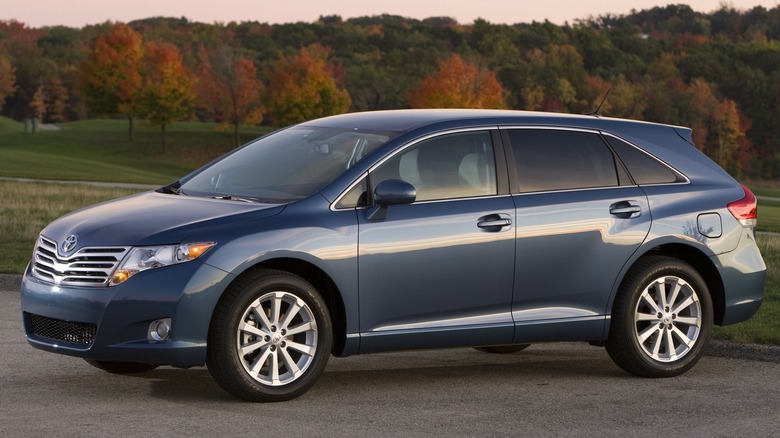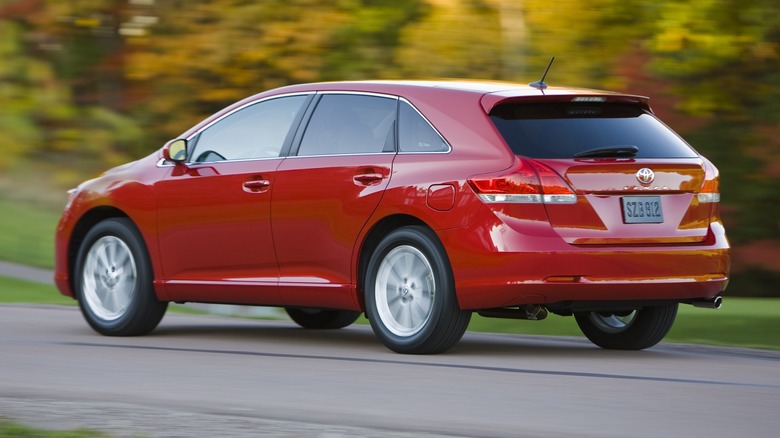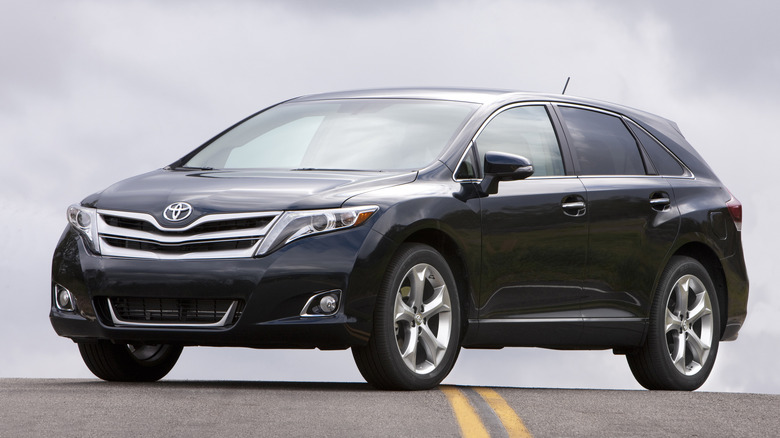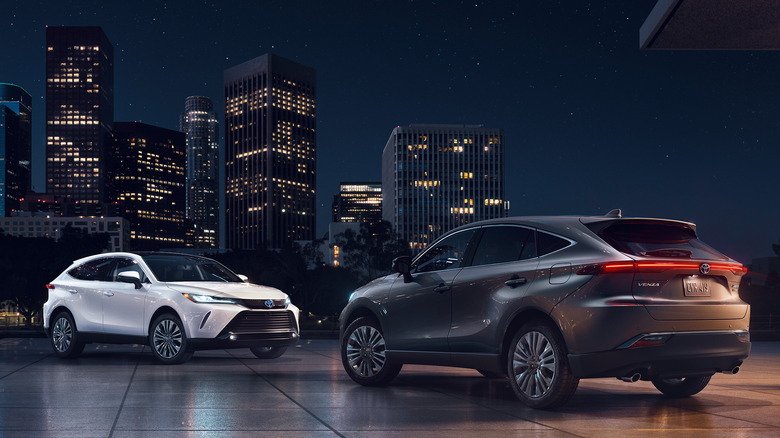Why Toyota Killed Off And Then Revived The Venza
The Toyota Venza has had two non-sequential production runs, the first from the 2009 model year to 2015 and the second from the 2021 model year to the present. The first generation has mostly faded into obscurity, while the most recent iteration first right in with Toyota's newest hybrid SUVs and crossovers. The Venza has undergone a reboot as opposed to spawning a sequel.
While it's not super unusual for car models to take a break for a few years and then come back, the revered Toyota Supra took a 17-year break between the fourth and fifth generations. The Supra took a hiatus after four generations of critical acclaim spanning decades; the Venza was unceremoniously canceled only a few short years into its initial run and brought back as if the first one didn't even exist. So why the long gap in production, and why did Toyota decide the Venza needed a complete do-over only six years after it debuted?
Just a big Camry
Right from the outset, Toyota didn't seem like it could decide what exactly the first-generation Venza was. The styling wasn't hateful by any stretch, but it looked more like a Camry that moonlighted as a powerlifter than a wholly unique vehicle. Mechanically, it shared a lot with the Camry. According to Toyota itself, the Venza was designed to be a pastiche of different Toyota models, stating: "Venza caters to buyers who are looking for the value and reliability of a Camry, the comfort and upscale refinement of an Avalon, and the utility and flexibility of a Highlander in one very stylish and sporty package."
Reviewers were split on the Venza when it arrived, praising the fuel economy of four-cylinder models and interior comfort while commenting that it wasn't all that interesting to drive. The lack of a third row was also a source of pain for some writers.
A sales dud
Spec-wise, the Venza had some fairly respectable engine power and economy numbers. The base 2.7-liter four-cylinder generated 181 horsepower, and you were rewarded with a combined 24 miles per gallon. The V6 netted 268 horsepower and a combined 22 miles per gallon. Notably, all-wheel drive was available with both engine choices. Additionally, it was equipped with a four-wheel independent suspension as standard and an electronic brake assist (this was a big deal in late 2008 when the Venza officially hit the shelves).
Then, there's the all-important issue of sales. Unfortunately for the Venza, it wasn't a great seller, and sales dropped as the years went on. From 2014 to 2015, Venza sales dropped 28.8 percent. Plus, it was dwarfed by sales from other Toyota models like the Highlander. In 2015, Toyota sold 21,351 Venzas, compared to 158,915 Highlanders, and you can see why Toyota wasn't going to go through the trouble of keeping the Venza alive much longer.
The Venza's back
Fast-forward to May 2020, and Toyota announced that it was bringing back a new and shiny Venza for the 2021 model year. However, the Venza for the 2020s still hasn't shaken off its sedan roots as it rides on the Toyota New Global Architecture (TNGA) K platform, which is shared by, you guessed it, the Camry. But as opposed to the previous iteration, it is able to set itself apart from the potential stigma of just being a tall Camry wagon — namely, the hybrid drivetrain.
Much like the Toyota Sienna minivan, the Venza is only available as a hybrid. With the electric motor system and gas engine working in tandem, it generates 219 horsepower. That translates to 37 combined miles per gallon. All-wheel drive is also standard across the current range of Venza.
With the introduction of the TNGA platform and more hybrid models like the newest generation of Toyota Sequoia, it makes sense for Toyota to bring back a mostly familiar nameplate with the Venza, even though it has little in common with the previous generation. For Venza's sake, hopefully, buyers take a liking to the crossover's "glow up."



